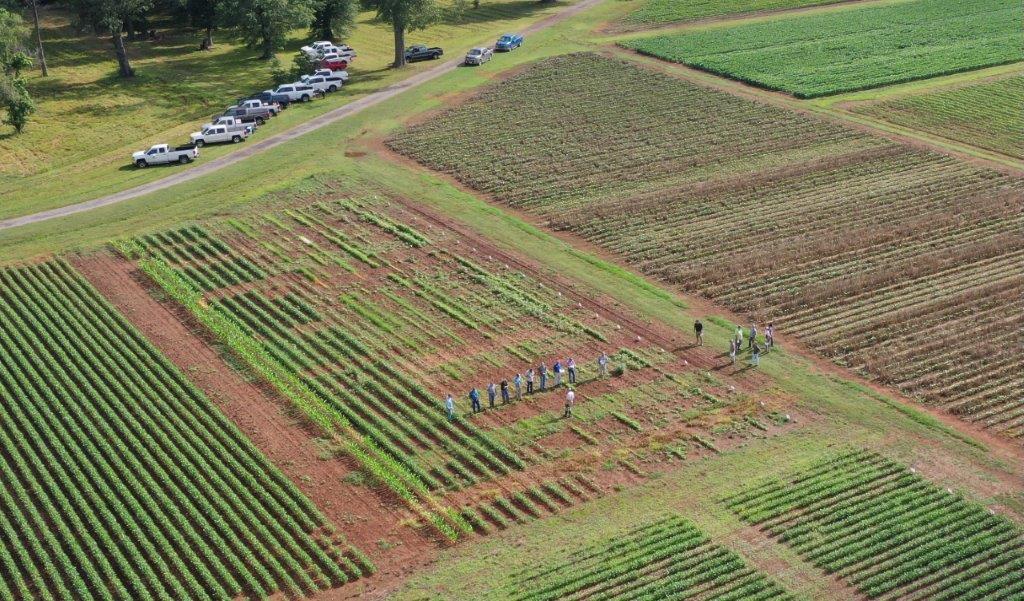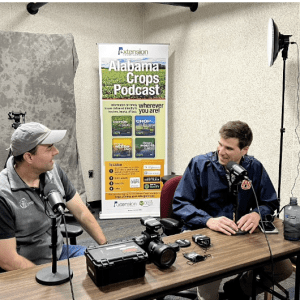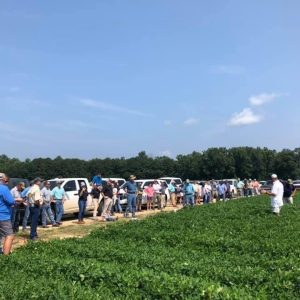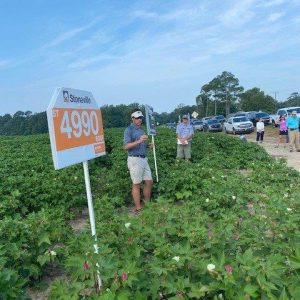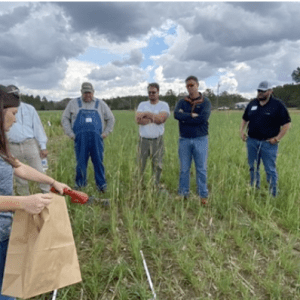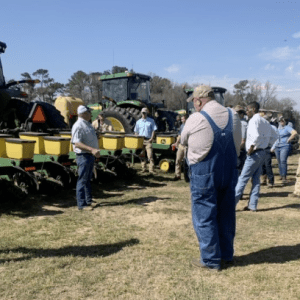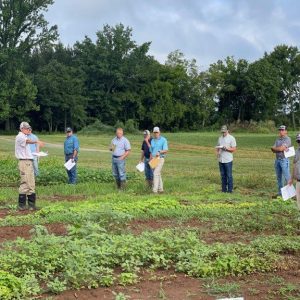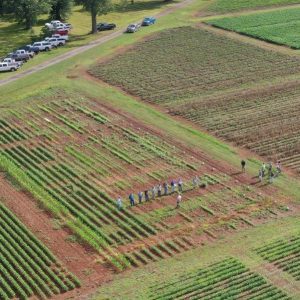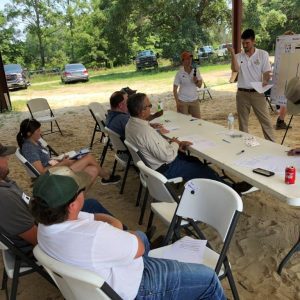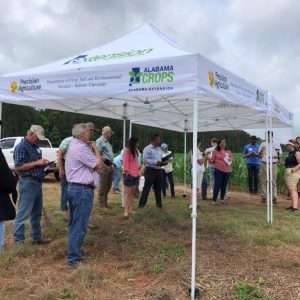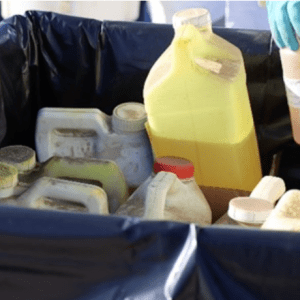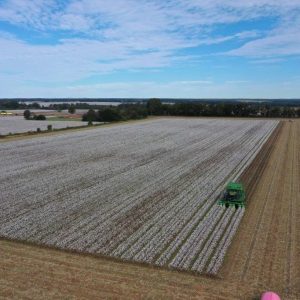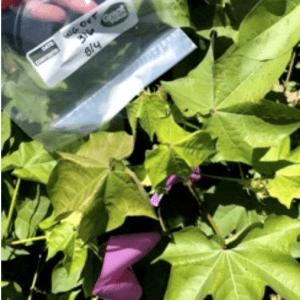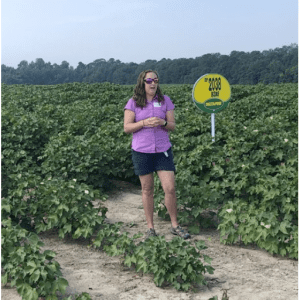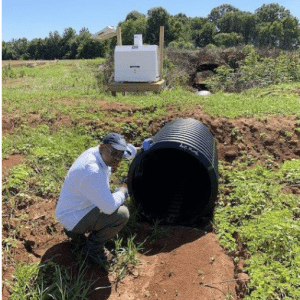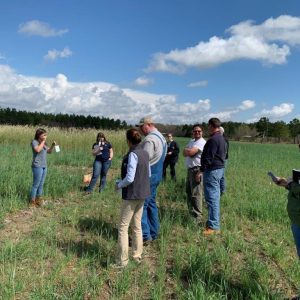Crop Production

The Agronomic Crops Program delivers research-based integrated information to improve producer management decisions while increasing profitability. Extension offers expertise in agronomy, pathology, entomology, weed science, agricultural engineering, and soil fertility for all major field crops.
Alabama Crops Report Newsletter
The Alabama Crops Report newsletter finished its second year of publication in 2021. Nineteen editions of the newsletter included 168 articles from the Agronomic Crops Team of specialists and regional Extension agents. The newsletter has 201 subscribers and a much wider reach than just its subscriber list. Regional Extension agents send the Alabama Crops Report newsletter to their mailing lists and estimate that each edition reaches approximately 699 growers in the state.
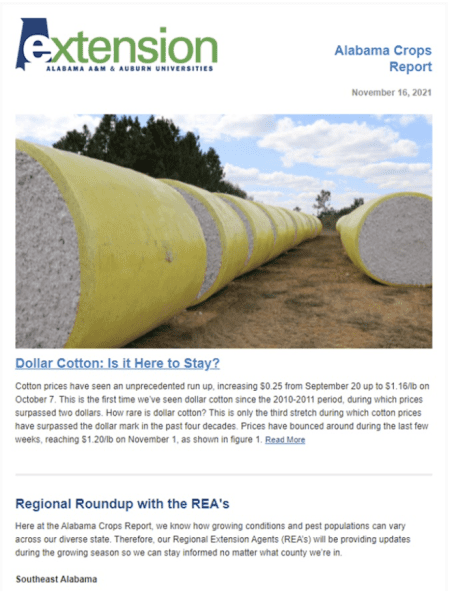
Alabama Extension Corn Audit Program
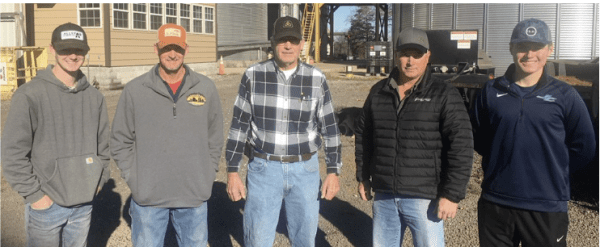
Henderson Farms set the Alabama corn yield record at 355 bushels per acre.
The impact of the Alabama Extension corn audit (25 production practices to increase corn yields and profits) has led to huge yield and profit increases for growers. Alabama’s yields in the National Corn Growers Association annual yield contest have increased more than 26 percent over the last three years, a measurable reflection of overall grower yields. A state record of 355 bushels per acre was set in 2019. Four Alabama growers who followed the corn audit placed nationally in the top 10 yields in their categories in 2020. This was the first time Alabama growers placed in the top 10. As a result of fertilizer prices more than doubling this year, a seven-step program based on replicated trials in both irrigated and nonirrigated fields was developed. The program will focus on reducing fertilizer use without reducing yields. Approximately 53 percent of growers in evaluation surveys at production meetings estimate that the program will save them between $50 and $100 per acre, and 40 percent estimate it will save them $100 to $150 per acre.
Early Soybean Planting System & Fertility Program
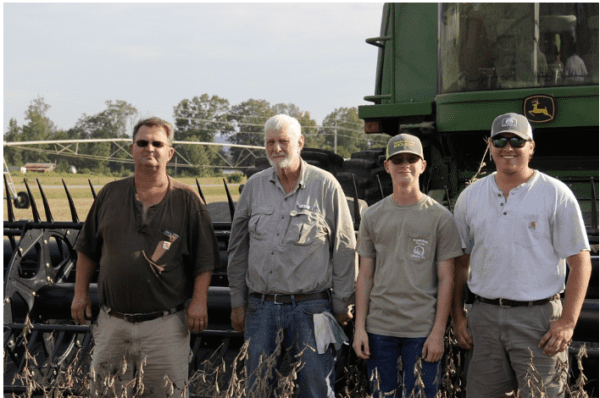
McMichen Farms became the first growers to produce a 100-bushel-per-acre soybean crop in Alabama.
Over the last five years, a grower working with two former Extension soybean specialists developed an early soybean planting system and fertility program to increase soybean yields and overall profit. The grower ultimately produced two world-record soybean yields and is currently the world record holder at 190.23 bushels per acre. The nationwide publicity this system has generated has numerous growers across the United States adopting it. Using this system, two growers in Alabama have broken the 100-bushel-per-acre yield barrier, and several irrigated and nonirrigated fields have averaged more than 90 bushels per acre. This is quite a feat given that the last four-year state average is 41 bushels per acre. The potential positives and negatives of the system have been published in national articles in popular farm press magazines so growers can determine whether the early planting system will fit into their own systems.
Alabama Crops Report Podcast
In 2021, the Agronomic Crops Team started the Alabama Crops Report podcast. With the help of Alabama Extension communicators, 32 episodes were recorded in the initial season. Co-hosts Scott Graham, Katelyn Kesheimer, Adam Rabinowitz, and Amanda Strayer-Scherer spoke with other Extension personnel and Auburn University faculty representing Entomology and Plant Pathology; Crop, Soils and Environmental Sciences; and Agricultural Economics, as well as colleagues from Florida State University, the United States Department of Agriculture (USDA), and farmers in Alabama. According to data provided by the Alabama Extension communications team, the podcast averaged 75 listeners per episode, and stories written for each episode were distributed to 125 major media outlets across the nation. The total ad revenue for the news articles exceeded $1.02 million and reached approximately one million readers. In addition to providing timely updates to farmers and other Alabama agriculture professionals, the podcast reached listeners and readers in the general population. Recent estimates indicate that fewer than 2 percent of the US population is directly employed in agriculture. This podcast not only serves the 2 percent in a meaningful way but also educates the 98 percent about what goes on in their state to help feed and clothe the world.
43rd Annual Central Alabama Crops Tour
The 43rd year for the Central Alabama Crops Tour occurred in 2021. This is one of the longest-lasting programs for Extension in Alabama. Producers in the area look forward to this event every year. After a small tour in 2020 due to COVID, 2021 was a defining year for the crops tour. Three on-farm trials were held in the Society Hill area in Lee County, allowing producers, industry representatives, and university participants to view the cotton, corn, and peanut trials in person. In all, 85 participants from Alabama, Georgia, and Mississippi attended. Many producers said it was very helpful and informative for their operations and that information gathered at the event would help them make decisions to finish out the crop year on a good note. 2021 also saw an increase in sponsorship, with 12 different companies donating $3,000 to be used for Extension programs in central Alabama.
Programs for Increasing Cover Crop Adoption
Many soils in Alabama and across the southeast are poor in quality because of intensive agricultural practices, coarse-textured soil types, and the hot, humid climate. Methods for sustainable crop production need to be identified for farms in the region to remain profitable. Cover crops and conservation tillage are important parts of conservation systems that can improve soil health, prevent nutrient loss, and improve sustainability. According to the 2017 census, while 82 percent of Alabama cropland is currently planted using conservation tillage, only 16 percent of acres are planted in cover crops. A project funded by the Natural Resources Conservation Service (NRCS) was established in 2021 to increase the adoption of cover cropping in Alabama. Five on-farm cover crop demonstration sites were established in Autauga, Geneva, Henry, Lawrence, and Lee Counties. Three cover crop field days were organized by Extension specialists for north, central, and south Alabama to present research-based information on topics including cover crop selection, rye establishment and planting dates, and cover crop termination options. Farmers were also invited to speak on topics such as planter modifications for planting in heavy residue and on-farm challenges and benefits to cover crop adoption. In addition, an incentive payment program was established through an NRCS grant to offset costs to farmers interested in improving cover crop management. In 2021, 21 farms signed up for the incentive payment program.
Weed Management Strategies for Alabama Cropping Systems
According to a recent needs assessment survey, almost 50 percent of producer respondents requested information about weed management in their operations. Many specifically asked for more research on pigweed. Despite COVID, the integrated weed management program held 13 formal events that addressed row crop producer concerns regarding troublesome weed species, herbicide resistance management, and timely weed control practices. These events reached at least 325 attendees directly, and shared information resulted in an average cost savings of $12.06 per acre. Approximately 98 percent of the survey respondents indicated they would likely use these recommendations.
An Extension client with a real estate business sent a letter in support of the weed management program, saying, “On behalf of a large group of clients, friends, and family, we would like to thank you for your extensive consideration and help. The management of invasive species . . . appears to be a fluid endeavor constantly changing with the constant introduction of new challenges. Being able to access the knowledge and services you and your organization provide is paramount. We thank you for your leadership, consideration and help regarding proper protocols and procedures in obtaining these lofty goals.”
Precision Agriculture Extension Program
The Precision Agriculture Extension Program conducted on-farm demonstrations, one-to-one farmer training, farmer focus group meetings, and live webinars. It also published eight Extension publications and blogs focused on increasing awareness, knowledge, and skills among farmers, crop consultants, and Extension personnel on using technology to increase site-specific crop management. Topics included precision irrigation, precision planting, and the use of yield-monitor data and drone images to support the variable-rate application of seeds, crop regulators, and defoliants and to better determine the timing of crop maturity in peanuts. Eight on-farm demonstrations focused on variable-rate irrigation, sensor-based irrigation scheduling, and evapotranspiration-based irrigation scheduling aided by phone apps. Two field demonstrations at the Gulf Coast Research and Extension Center in Fairhope focused on evaluating and demonstrating precision planting technologies for cotton and peanuts.
For farmer engagement and training, the program focused on peer-to-peer training and knowledge sharing. Farmers meetings consisted of group exercises in which farmers shared their approaches and knowledge about crop management and challenges in implementing practices such as irrigation scheduling. Participants learned about best irrigation management practices, crop water use, and irrigation scheduling during three irrigation field days. The Alabama Irrigation Management Program Newsletter provided information about how to use soil sensors or irrigation phone apps for scheduling.
2021 Wiregrass Cotton Expo
The Wiregrass Cotton Expo has been an annual event in Houston County for more than 20 years, providing education to regional growers as they prepare for the upcoming growing season. During the pandemic, in-person programming was suspended; but the information from Extension personnel and industry representatives was still necessary and valuable for crop planning. To facilitate the dissemination of this information while still under meeting restrictions, educators presented Expo content in an online format during the second week of February. Recorded presentations by Extension specialists and industry and seed representatives included fertilization updates, marketing strategies, cotton outlooks, herbicide updates, and plant disease and climate updates. Videos were shared via the Wiregrass Agronomy Facebook page, with a total reach of 12,346 for all videos.
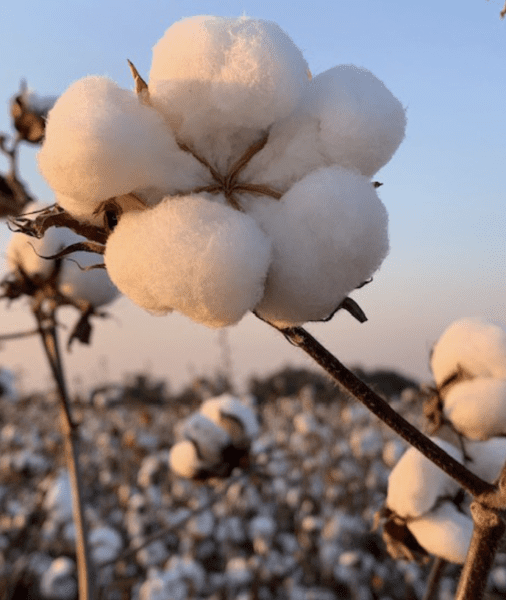
Small-Group Stakeholder Trainings
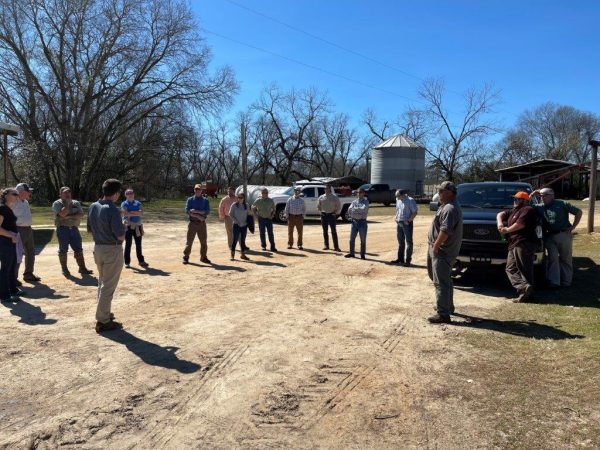 In the spring of 2021, a group of Extension specialists conducted 10 small-group visits to stakeholders around the state and conducted five in-person auxin trainings. The focus was crop protection and crop management. During these small-group visits and auxin trainings, specialists from the Agronomic Crops Team gave individual updates and answered questions from row crop growers. Paper surveys were conducted, with a total of 154 grower respondents. Results suggest that growers want more Extension and research updates about resistant pigweed and weed management, insect management, plant disease management, nutrient deficiency and soil fertility issues, and variety selection and testing. Stakeholders highly rated the information the Agronomic Crops Team promoted regarding pest control and crop management. Survey respondents manage 271,172 total row crop acres. The average savings per acre was $12.06, and the total economic impact on row crops was $3,271,547. More than 93 percent of respondents indicated they that had used recommendations promoted by Extension specialists from the Agronomic Crops Team.
In the spring of 2021, a group of Extension specialists conducted 10 small-group visits to stakeholders around the state and conducted five in-person auxin trainings. The focus was crop protection and crop management. During these small-group visits and auxin trainings, specialists from the Agronomic Crops Team gave individual updates and answered questions from row crop growers. Paper surveys were conducted, with a total of 154 grower respondents. Results suggest that growers want more Extension and research updates about resistant pigweed and weed management, insect management, plant disease management, nutrient deficiency and soil fertility issues, and variety selection and testing. Stakeholders highly rated the information the Agronomic Crops Team promoted regarding pest control and crop management. Survey respondents manage 271,172 total row crop acres. The average savings per acre was $12.06, and the total economic impact on row crops was $3,271,547. More than 93 percent of respondents indicated they that had used recommendations promoted by Extension specialists from the Agronomic Crops Team.
Small Group Training in West-Central Alabama
In response to COVID-19, the Agronomic Crops Team organized small-group visits across the state. In February, the team met at a farm on the east side of Selma with specialists from Auburn and about 20 growers from around the area to discuss upcoming and in-season plantings as well as some of the challenges growers were facing moving forward. Feedback received from the growers was positive, and they were very appreciative of the Agronomic Crops Team efforts to visit with them and the research that was being done. The smaller groups encouraged farmers to be more interactive and ask questions that benefitted all.
Pesticide Collection Days
The Alabama Department of Agriculture and Industries (ADAI), Extension, and the Alabama Agricultural Experiment Station conducted pesticide collection days in Madison and Henry Counties to dispose of unwanted pesticides in a safe and environmentally sound manner. The service was provided at no cost to growers while saving them more than $150,000 in disposal fees. Insecticides, fungicides, herbicides, and rodenticides were packed and sent to an incinerator using EPA grant funding. Madison County collected a total of 49,285 pounds of pesticides, and Henry County collected 42,933 pounds. In addition, more than 15,000 pesticide containers were recycled, keeping them out of landfills. The return on investment for Extension resources was $76.72 for every dollar invested in this program.
Cotton Scouting Schools
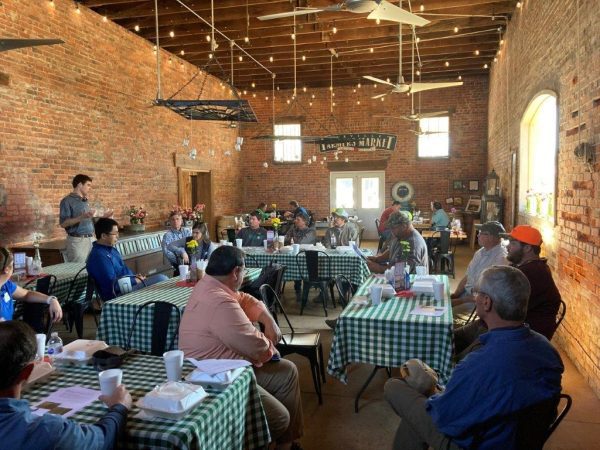 The Alabama Extension Cotton Entomology Team trained 143 scouts in five trainings across the state during the 62nd Cotton Scouting School. The Alabama Extension Crop Protection Team gave pest management updates at 15 county/regional meetings or field days to more than 530 attendees including growers, field advisers, regional Extension agents, and other agriculture professionals. In addition to in- person contacts, the team made weekly and monthly contributions to the Alabama Crops Report newsletter, Alabama Cotton Shorts newsletter, and several contributions to AgFax, the Extension website, and Alabama Insects Blog with more than 3,230 views. Two YouTube videos on cotton pest management had 147 views, and four Pest Patrol Hotline messages to 205 subscribers were posted. Based on contacts throughout the season and the annual Cotton Insect Losses Report, the overall economic impact of the Alabama Extension Cotton Program is estimated to be more than $3.3 million.
The Alabama Extension Cotton Entomology Team trained 143 scouts in five trainings across the state during the 62nd Cotton Scouting School. The Alabama Extension Crop Protection Team gave pest management updates at 15 county/regional meetings or field days to more than 530 attendees including growers, field advisers, regional Extension agents, and other agriculture professionals. In addition to in- person contacts, the team made weekly and monthly contributions to the Alabama Crops Report newsletter, Alabama Cotton Shorts newsletter, and several contributions to AgFax, the Extension website, and Alabama Insects Blog with more than 3,230 views. Two YouTube videos on cotton pest management had 147 views, and four Pest Patrol Hotline messages to 205 subscribers were posted. Based on contacts throughout the season and the annual Cotton Insect Losses Report, the overall economic impact of the Alabama Extension Cotton Program is estimated to be more than $3.3 million.
Precision Ag Webinars
Precision Agriculture is a hot topic in modern agriculture. Most growers and crop consultants see the benefits but do not always understand all the available technologies. The Precision Agriculture webinar hosted nine live episodes via Facebook and Zoom in 2021, involving Extension specialists, industry representatives, farmers, and crop consultants from Alabama and other locations. The webinar topics were related to the benefits of variable-rate fertilization and liming, cover crop termination and nitrogen credits from legumes, planter calibration and technologies, preplant burndown options for corn and soybeans, benefits of aerial or satellite images in agriculture, updates on row crop pest management, strategies and tools for irrigation scheduling, and pivot operation and maintenance. The webinars provided timely information during the growing season to help growers understand the precision agriculture tools available and how to use them in their operations. A total of 6,570 views (all episodes) and 988 engagements were made on Facebook, and 134 people watched the webinars live. The webinars can be found on the Alabama Precision Ag Online Facebook page.
On-Farm Cotton Variety Trials
In a recent survey, Alabama growers were asked to provide a list of their 10 most important production issues. Variety trials and selection were one of the top three issues—in particular, variety trials performed on their respective farms. In response, a total of 15 on-farm cotton variety trials were planted across the state, representing major production areas and niche environments. Results from these trials are disseminated to growers and agricultural industry representatives through various media outlets and other forms of communication. On-farm variety trials provide real-world data consisting of varietal performance on farms and consistency trends across different growing regions. This information helps growers make informed decisions about what varieties to plant or not plant, thus increasing their net profit potential.
Six on-farm wheat variety trials were also conducted in north Alabama, representing the major wheat- growing areas in the state. Information from these trials accomplishes the same objectives as the cotton trials. On-farm variety trials are an excellent way to establish connections with clientele. Members of the Agronomic Crops Team met with growers at regular intervals throughout the growing season. This led to a multitude of interactions in which growers had the team look at various farm fields and answer questions related to weed control, insect management, fertility, plant growth regulator applications, defoliation applications, and many other issues. The team provided real-time information used to make timely decisions. Many farmers shared this information with their neighboring farmers and consultants. These interactions also led to ideas for further research needs.
Cotton Seeding Rates
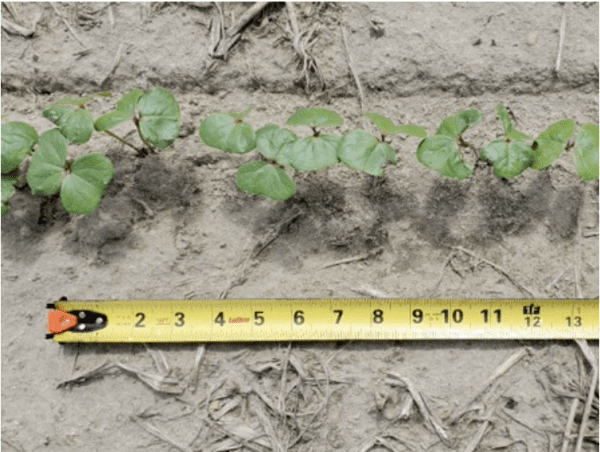 Cotton seeding rates have been an ongoing topic at grower meetings and in the Alabama Cotton Shorts newsletters, Beltwide Cotton Conference proceedings, field days, and one-on-one discussions. “The seed is where it’s at” is an often-repeated theme because of the 20-fold increase in seed costs over the past 25 years and the associated pest management options linked to seed and incorporated traits and technologies. A seed company representative recently shared the experience of a farm family customer who listened to the information regarding reduced seeding rates. The operation traditionally planted 34,000 seed/acre on a 38-inch row spacing. Prompted by the comments, they compared seeding rates from 34,000 to 28,000 seed/acre over several farms and a couple of years. They were ultimately satisfied to go with the lowest rate, saving thousands of dollars across their 4,000-plus acre farm.
Cotton seeding rates have been an ongoing topic at grower meetings and in the Alabama Cotton Shorts newsletters, Beltwide Cotton Conference proceedings, field days, and one-on-one discussions. “The seed is where it’s at” is an often-repeated theme because of the 20-fold increase in seed costs over the past 25 years and the associated pest management options linked to seed and incorporated traits and technologies. A seed company representative recently shared the experience of a farm family customer who listened to the information regarding reduced seeding rates. The operation traditionally planted 34,000 seed/acre on a 38-inch row spacing. Prompted by the comments, they compared seeding rates from 34,000 to 28,000 seed/acre over several farms and a couple of years. They were ultimately satisfied to go with the lowest rate, saving thousands of dollars across their 4,000-plus acre farm.
Alabama Cotton Shorts
A significant goal of the Agronomic Crops Team has been to increase the presence of Extension’s cotton specialists among farmers, agribusiness personnel, and others in the region. A monthly newsletter, Alabama Cotton Shorts, was initiated in 2019 to deliver information from across multiple disciplines involving issues related to cotton production and management. The original distribution list included about 45 people. That direct list now totals 228 individuals. Through regional Extension agents and the Research and Extension Center mail lists, an additional 1,236 recipients were added, meaning that the newsletter now reaches more than 1,450 people each month. Articles are often quoted by other media outlets such as AgFax, Southeast Farm Press, etc. Extension continues to build on the newsletter’s success, seeking to increase recognition across the state and beyond.
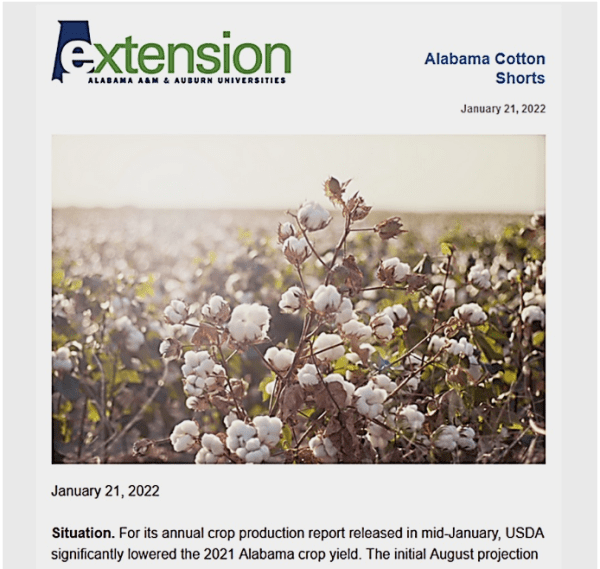
CLRDV Sentinel Plot Program
Cotton leafroll dwarf disease (CLRDD) is a new virus affecting cotton in the southeast. The disease is caused by the cotton leafroll dwarf virus (CLRDV-AL) and is vectored by aphids. CLRDV-AL was first detected in Alabama in 2017 and is now considered endemic throughout the region. There are many unknowns about the disease, including when infection occurs, the length of the latency periods, disease progression and symptom development, the effect of environmental factors on disease development, and yield effects. This lack of knowledge makes it difficult for producers to scout for the disease and make informed management decisions. In response, Extension specialists with the Agronomic Crops Team working with Auburn University researchers developed the CLRDV sentinel plot network in 2019. CLRDV sentinel plots were established at five Alabama Agricultural Experiment Station research centers and outlying units. The sentinel plots are used to monitor aphid pressure, symptomology, yield impacts, and CLRDV incidence as affected by cotton variety, planting date, and location. Results from the program were shared with stakeholders during row crop tours, an Alabama Crop Consultants meeting, one in-service training for Agronomic Crops regional Extension agents, the Wiregrass Research and Extension Center field day, the 43rd Annual Alabama Crops Tour, the Alabama Crop Management Association meeting, and in various newsletters and on social media. Extension efforts also led to a news article entitled “Research Key to Fighting Cotton Virus,” published by Progressive Farmer. This information is helpful to producers when planning for future cotton production seasons.
Alabama Animal Waste and Nutrient Management Program
The Alabama Animal Waste and Nutrient Management (AAWNM) program started The Future of Farming project in 2021 to combine the benefits of cover crops and smart irrigation practices for improving soil health and water- and nutrient-use efficiency while conserving water and energy. Three farms located in north, central, and south Alabama were selected for on-farm demonstrations. The new conservation practices were compared against the business-as-usual practices for yield gains, components of nitrogen and phosphorus budget, edge-of-field runoff losses, nutrient- and water- use efficiency, production economics, and barriers to adopting these technologies. Eight educational meetings focused on cover crops, irrigation management, or nutrient management.
One of the unique features of this project is the formation of farmer focus groups in which farmers and researchers codevelop information to increase the adoption of sustainable production practices. In the northwest, central, and southeast regions of the state, the focus groups include local farmers, crop consultants, regional Extension agents, and an Natural Resources Conservation Service (NRCS) representative.
A cover crop incentive payment program was also initiated to help farmers pay for the adoption of cover crops. The farming community has received the project well, with 28 farms signing up for incentive payments in the fiscal year 2021. Intensive data collected on the demonstration farms has provided insights into nutrient runoff losses, biomass and nutrient removal patterns, soil moisture patterns, and other issues. Farmers were informed of the project’s main findings, and engagement will continue throughout the life span of the project.
The AAWNM program also continued the Know Your Farm Phosphorus Levels project. This programing effort, started in 2018, has led to a collection of more than 850 soil samples belonging to five soil regions of Alabama. The soils were analyzed for soil nutrients such as phosphorus, potassium, calcium, magnesium, iron, aluminum, and micronutrients. Relationships were explored to find the best soil test extractants that can be used for environmental phosphorus risk assessment across Alabama soil regions. The project’s findings were published in the Agrosystems, Geosciences & Environment journal. The Soil Science Society of America communications division reported that the article was in the top 5 percent of all research outputs scored by Altmetric.
Sustainable Crops Educational Programs – Plant Diagnostic Lab
During 2021, the Auburn University Plant Disease Laboratory (AU-PDL) ran 3,278 routine samples (1,695 plant; 1,481 nematode; and 102 insect). One percent of clients surveyed (n=33) saved an average of $453/sample by following lab recommendations. With 3,278 routine plant samples, the AU-PDL saved clientele $1,484,934. Additionally, of the clients surveyed, 96 percent indicated that they had adopted or planned to adopt integrated pest management (IPM) recommendations provided by the AU-PDL based on their diagnostics.
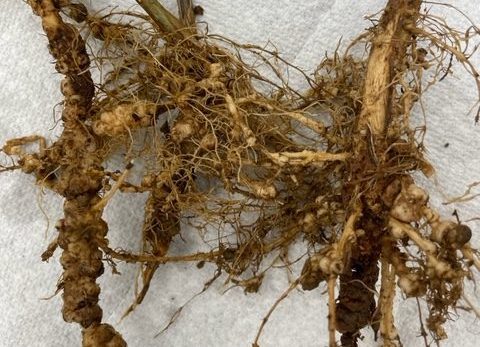
Crops Team Responds to Peanut Problems in Wiregrass Area
The 2021 growing season had higher-than-average rainfall, cooler temperatures, and a record number of cloudy days. The cool, wet conditions in the Wiregrass region pushed planting later into the spring, which is not optimal for yield production. The cool temperatures and abundant rainfall also delayed applications of fungicides, herbicides, and insecticides and contributed to weed problems and soilborne diseases such as white mold and Rhizoctonia. The Agronomic Crops Team and Extension specialists came to the aid of a farmer in Covington County who was dealing with these problems as well as a lack of help on the farm. With the team’s assistance and production recommendations, the grower went from a potential total loss of his 60-acre peanut farm to production of a decent crop.
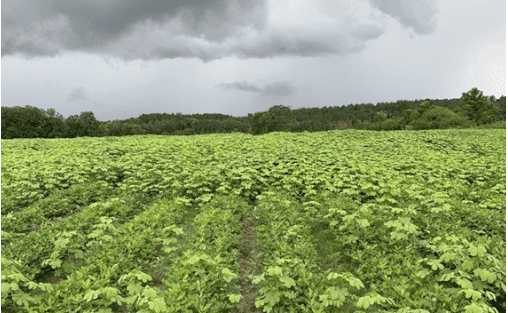
Science for Success
Science for Success is a group of soybean Extension specialists from different states focused on researching soybean. The Soybean Research and Information Network website has important information for growers, and new research projects are beginning to generate new and practical information. In 2022, a multistate research project on biologicals for soybean seed treatment will start to test and assess the benefits of such products on the market and offered to farmers every day. Auburn University will host two sites in Alabama.
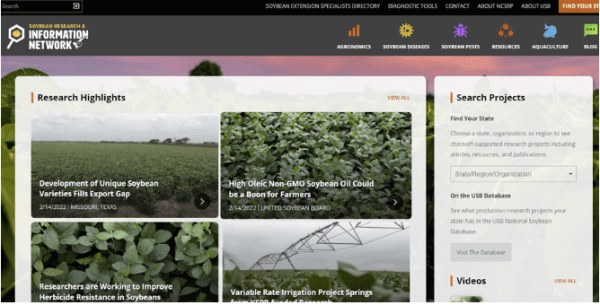
Southern Corn Leaf Rust
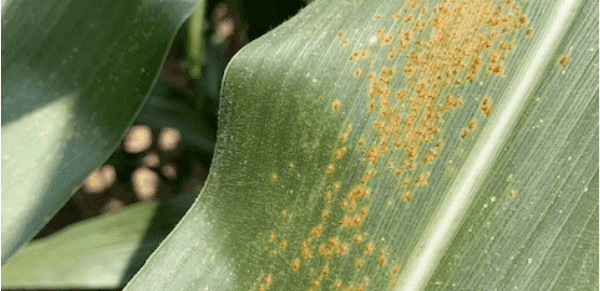 In 2020, corn-disease sentinel plots were established at key research stations in the state, and commercial fields of corn were monitored. Monitoring revealed that southern corn leaf rust was developing rapidly in south Alabama in June and that growers could expect significant yield losses if they did not apply fungicide to crops. Recommendations about disease incidence and management of southern rust were shared with growers, regional Extension agents, and agribusiness representatives via the Alabama Crops Report newsletter, the Alabama Crops Report podcast, social-media outlets, email alerts, and national corn leaf rust disease monitoring sites. Based on the Agronomic Crops Team monitoring efforts and management recommendations, growers who applied a single fungicide application in south Alabama increased yield by an average of 16 bushels per acre. One 1,800-acre corn farm used a single fungicide application and increased profit by $877.40 per acre, or a total value of $1,579,320 for this individual farm operation.
In 2020, corn-disease sentinel plots were established at key research stations in the state, and commercial fields of corn were monitored. Monitoring revealed that southern corn leaf rust was developing rapidly in south Alabama in June and that growers could expect significant yield losses if they did not apply fungicide to crops. Recommendations about disease incidence and management of southern rust were shared with growers, regional Extension agents, and agribusiness representatives via the Alabama Crops Report newsletter, the Alabama Crops Report podcast, social-media outlets, email alerts, and national corn leaf rust disease monitoring sites. Based on the Agronomic Crops Team monitoring efforts and management recommendations, growers who applied a single fungicide application in south Alabama increased yield by an average of 16 bushels per acre. One 1,800-acre corn farm used a single fungicide application and increased profit by $877.40 per acre, or a total value of $1,579,320 for this individual farm operation.
 Katelyn Kesheimer, Eddie McGriff, Scott Graham, Amanda Strayer-Scherer, Kassie Conner, Adam Rabinowitz, Andrew Sparks, John Vanderford, Audrey Gamble, David Russell, Brenda Ortiz, Livia Ianhez Pereira, Bruno Lena, Guilherme Morata, Jessica Kelton, Steve Li, Sonja Thomas, Jimmy Jones, Tyler Sandlin, Rishi Prasad, Sedrick Mack, Eros Francisco, Steve Brown, and Edward Sikora.
Katelyn Kesheimer, Eddie McGriff, Scott Graham, Amanda Strayer-Scherer, Kassie Conner, Adam Rabinowitz, Andrew Sparks, John Vanderford, Audrey Gamble, David Russell, Brenda Ortiz, Livia Ianhez Pereira, Bruno Lena, Guilherme Morata, Jessica Kelton, Steve Li, Sonja Thomas, Jimmy Jones, Tyler Sandlin, Rishi Prasad, Sedrick Mack, Eros Francisco, Steve Brown, and Edward Sikora.
New June 2022, Agronomic Crops Impact Report 2021, ANR-2888

